From drinking milk to hay milk cheese made from raw milk
Hay milk is found as a precious natural resource in many areas of life, beginning with its simple use as a drinking milk, to yoghurt or butter and even deliciously matured cheese specialities made of raw milk or thermally treated and pasteurised milk.
What all hay milk products have in common is that their quality depends significantly on the raw material, so the milk. The feed given to the cows is a crucial factor in this process. Flavoursome grasses and herbs that grow on our fields, meadows and alpine pastures guarantee only the best possible milk quality. After all, the quality and flavour of the milks, as well as the food that is produced on its basis, are improved by the richness of biodiversity.
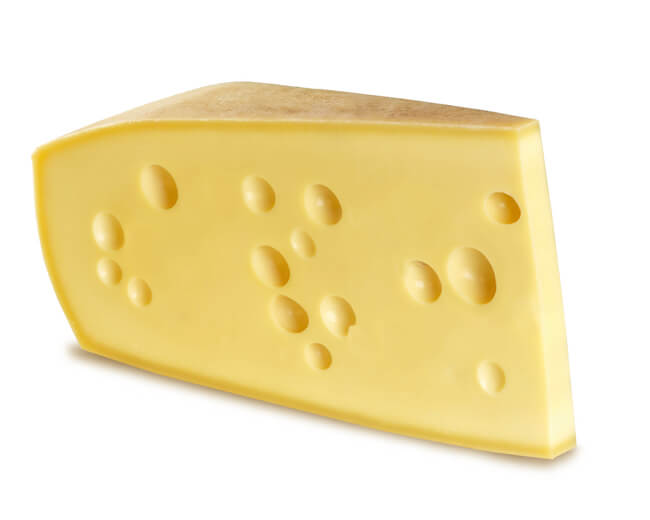
Hard cheese
Traditionally manufactured hard cheese is made exclusively of hay milk, as this ingredient is a requirement for prolonged ripening processes. This is how the cheese develops its malty, roasted aromas. The typical aroma and flavour grow in intensity as the natural rind becomes increasingly mature, which can take between three and twelve months or even more.
The water content of hard cheeses is proportionally the lowest of all types of cheese and is between 30-40%, thus the proportion of dry mass is greatest in hard cheeses. To ensure that the cheese dough loses as much water as possible during production, the curd is cut into very small pieces and treated again by reheating, the so-called “burning”. This gives the dough its typical structure.
Traditional varieties include mountain and alpine cheeses (Vorarlberger Bergkäse PDO, Vorarlberger Alpkäse PDO, Tiroler Bergkäse PDO, Tiroler Almkäse PDO). They are ripened with red culture, i.e. the rind is not only treated with salt water but also with red culture. Cheeses such as Emmental are only treated with salt water during the maturing process. Both of these methods promote the formation of rind, which acts as a natural preservative for the cheese.
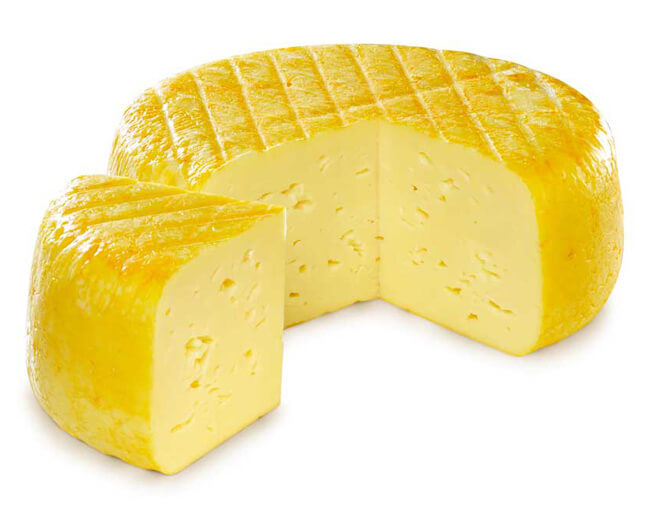
Semi-hard cheese
This type of cheese includes the largest number of varieties. The range of flavours extends from mild to powerful and tangy. Semi-hard cheese is largely produced using pasteurised milk. Its dough can be intact or have holes. Even larger holes, as found in Emmental, are typical of this type. Unlike hard cheeses, the water content of semi-hard cheeses is greater and ranges from 40-50%.
Strong semi-hard cheeses are treated with red cultures during the ripening process and usually mature for several weeks. In the process, the cheese matures from the outside in and evenly through the cheese mass. It develops malty-roasted aromas that are reminiscent of light caramel or biscuit. Mild varieties ripen in a special film for only a few weeks and have a slightly sour, milky-creamy character.
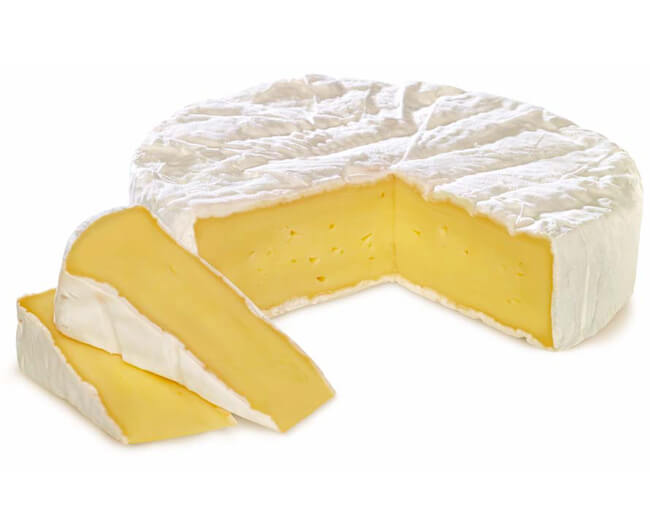
Soft cheese
Soft cheese with white edible mould is produced by adding edible mould cultures to the milk or by spraying the surface of the cheese with these cultures. This group of cheeses is famous for its aromas of mushrooms. They are often reminiscent of young timber or moss.
Soft cheese with red culture is treated during the maturation process with brine and red culture bacteria, which turns the surface orangey-red or brownish and adds its typical flavour. The cheese develops more powerful creamy-malty aromas as it ages.
Young cheese initially has a pot-like paste. With age, the cheese acquires a creamy texture. The ripening period of soft cheese is between three and six weeks. Special requirements must be met by the packaging material. If the material is too dense, there is a risk that mold or red culture will “die” and the cheese surface will become greasy, smelly. If the material is too permeable to air, the cheese surface dries out too much.
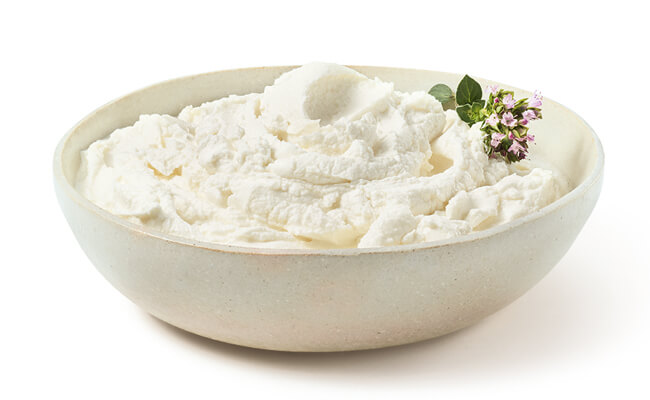
Cream cheese and curd cheese
Cream cheese is the only type that does not need to mature and can be consumed immediately after its production. It possesses a very soft and creamy texture. Delicate aromas of yoghurt or buttermilk are typical. Varieties containing more fat have a creamy consistency. Cream cheese is easy to produce.
Milk is caused to coagulate by adding lactic acid bacteria, sometimes also rennet. Once the cheese curds have been cut into walnut-sized pieces, the mass is placed into moulds and the whey seeps out. It is often mixed with fresh herbs or even blossoms to add flavour.
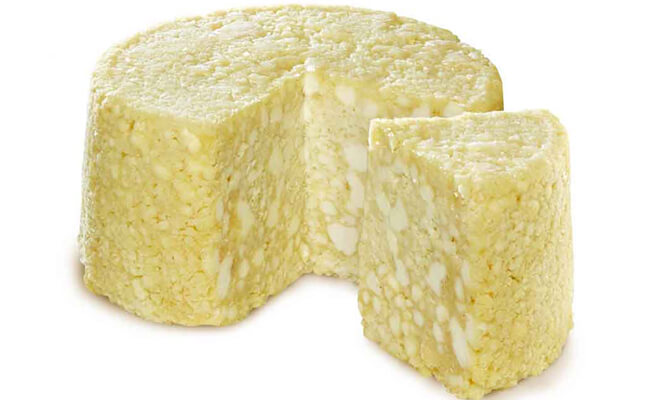
Curdled milk cheese
Sour milk cheese is the most original form. It is made of skimmed curds. Yeast and milk mould cultures induce maturing from the outside in. The crumbly curds acquire an increasingly glassy-elastic consistency after about two weeks.
Fresh yeast and buttermilk are easily detectable on the palate. This cheese develops a complex aroma as it grows older. Tiroler Graukäse or Surakäse are among the traditional varieties. Sour milk cheese contains virtually no fat.

Milk
Milk is a particularly valuable food because it contains many vital nutrients and is an important source of calcium for the healthy development of bones and teeth. Cow’s milk consists of 87.1% water, the rest is divided between fat, protein, carbohydrates (lactose), minerals and vitamins. In addition to providing calcium, milk provides the body with sufficient protein, B12 and B2 vitamins. Milk is produced by placing the untreated milk in a centrifuge to obtain the preferred fat content.
The milk is then homogenised to prevent fat globules from accumulating on the surface of the milk and pasteurised to ensure a suitable shelf life. It has slightly sweet, creamy characteristics with delicate aromas of vanilla and almond.
Cheese is the concentrated, preserved form of milk. Therefore, for the taste of the cheese, the quality as well as the feeding of the animals plays an important role.
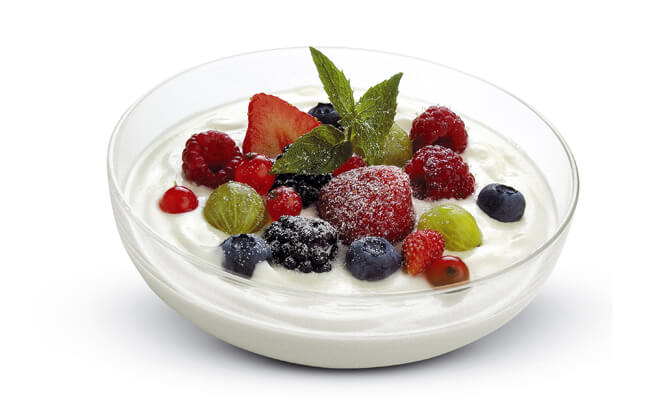
Yoghurt
Yoghurt is one of the oldest dairy products known to humankind. Freshly pasteurised milk is enriched with lactic acid bacteria, which cause fermentation that converts some of the milk sugar into lactic acid. This produces the typical mildly acidic taste.
A distinction is made between firm and stirred, creamier yoghurt. The firmness is firstly due to the maturing process in the cup and secondly because the yoghurt is not stirred after it has been thickened.
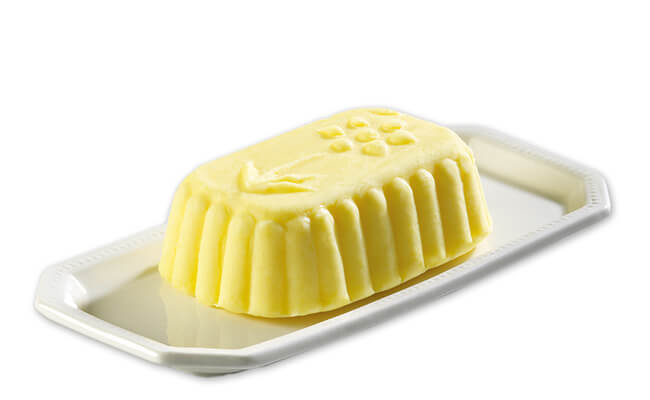
Butter
The production of sweet cream butter involves adding butter cultures to the cream, which is then beaten until the lumps of fat – the butter particles – separate from the buttermilk. They are then kneaded to reduce the water content even more. The end product has a mild and creamy flavour.
Small alpine dairies and cheese makers often use traditional methods to produce sour cream butter from thermally-treated or raw milk. During this process, the cream is pre-ripened overnight with special acidifying cultures and then whipped into butter. This type of butter has a more varied aroma with crisp, acidic notes.